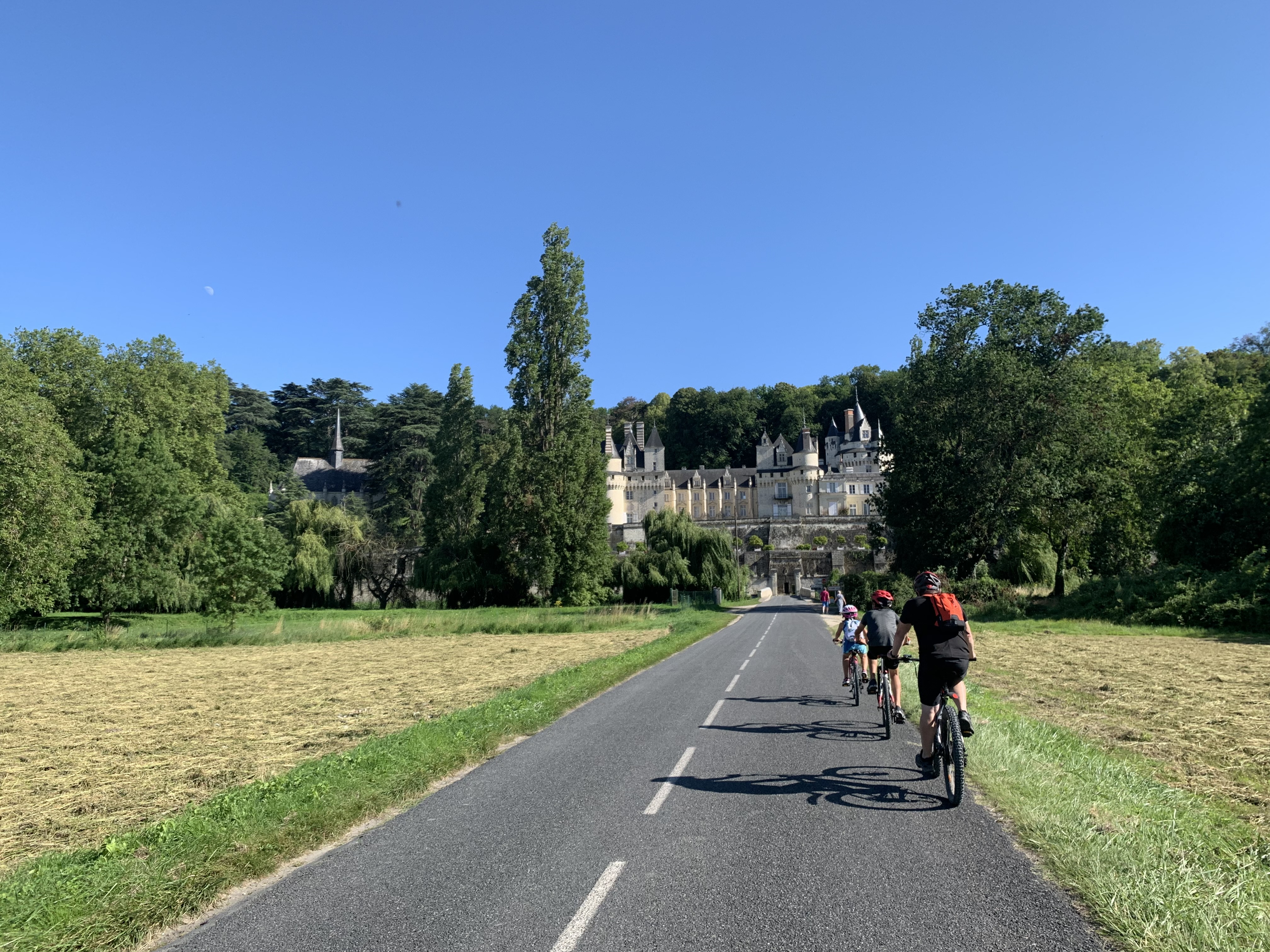Sleeping Beauty's tour

Rigny-Ussé
Sleeping Beauty's tour
Easy
1h
8,8km
+63m
-64m
Loop
Embed this item to access it offline
Description
1. The Château of Ussé
On the edge of the dark and mysterious Chinon forest, dominating the Indre valley from its high white silhouette, Ussé, the Château de la Belle au Bois Dormant, is the very symbol of the medieval castle for daring lords and ladies, poets and fairy tales. The terraced gardens were designed by Le Nôtre, creator of the gardens at Versailles. The adjacent early 16th-century collegiate chapel boasts a magnificent porch.
2. The village of Rigny-Ussé
To provide a link between the Château and the village centre, there is a 1km heritage interpretation trail through the village. A nature trail also starts from the Château car park. In a bucolic setting by the water, it invites you to discover the sights of Rigny-Ussé. You can also explore the Espace Naturel Sensible des ‘Bardeaux de l'Indre’, named after the former marshlands, which are divided into branches that flow into the Indre.
3. Notre Dame de Rigny church
Dating from the 12th century, this church has a single nave with three ribbed bays. The crossing supports a large square bell tower. In the middle of the crossing is a cavity in which a spring gushes out. Excavations have uncovered several successive cemeteries, the oldest of which dates back to the 9th century. Disused since 1860, the church is gradually being renovated thanks to the efforts of a local association that also offers tours and concerts in summer.
4. The Loire
The last wild river in Europe, the Loire is fascinating. For a picnic or a picturesque break, you can admire an exceptional natural and landscape heritage listed as a World Heritage Site by UNESCO.
5. Notre-Dame-Des-Eaux oratory
This small monument just beyond the Pont Neuf was built just after the 1846 flood. The niche houses a modern plaster Madonna. On one side, two flood marks are carved into the tufa stone.
On the edge of the dark and mysterious Chinon forest, dominating the Indre valley from its high white silhouette, Ussé, the Château de la Belle au Bois Dormant, is the very symbol of the medieval castle for daring lords and ladies, poets and fairy tales. The terraced gardens were designed by Le Nôtre, creator of the gardens at Versailles. The adjacent early 16th-century collegiate chapel boasts a magnificent porch.
2. The village of Rigny-Ussé
To provide a link between the Château and the village centre, there is a 1km heritage interpretation trail through the village. A nature trail also starts from the Château car park. In a bucolic setting by the water, it invites you to discover the sights of Rigny-Ussé. You can also explore the Espace Naturel Sensible des ‘Bardeaux de l'Indre’, named after the former marshlands, which are divided into branches that flow into the Indre.
3. Notre Dame de Rigny church
Dating from the 12th century, this church has a single nave with three ribbed bays. The crossing supports a large square bell tower. In the middle of the crossing is a cavity in which a spring gushes out. Excavations have uncovered several successive cemeteries, the oldest of which dates back to the 9th century. Disused since 1860, the church is gradually being renovated thanks to the efforts of a local association that also offers tours and concerts in summer.
4. The Loire
The last wild river in Europe, the Loire is fascinating. For a picnic or a picturesque break, you can admire an exceptional natural and landscape heritage listed as a World Heritage Site by UNESCO.
5. Notre-Dame-Des-Eaux oratory
This small monument just beyond the Pont Neuf was built just after the 1846 flood. The niche houses a modern plaster Madonna. On one side, two flood marks are carved into the tufa stone.
- Departure : Ussé chateau
- Arrival : Ussé chateau
- Towns crossed : Rigny-Ussé and Bréhémont
Forecast
Altimetric profile
Report a problem or an error
If you have found an error on this page or if you have noticed any problems during your hike, please report them to us here: